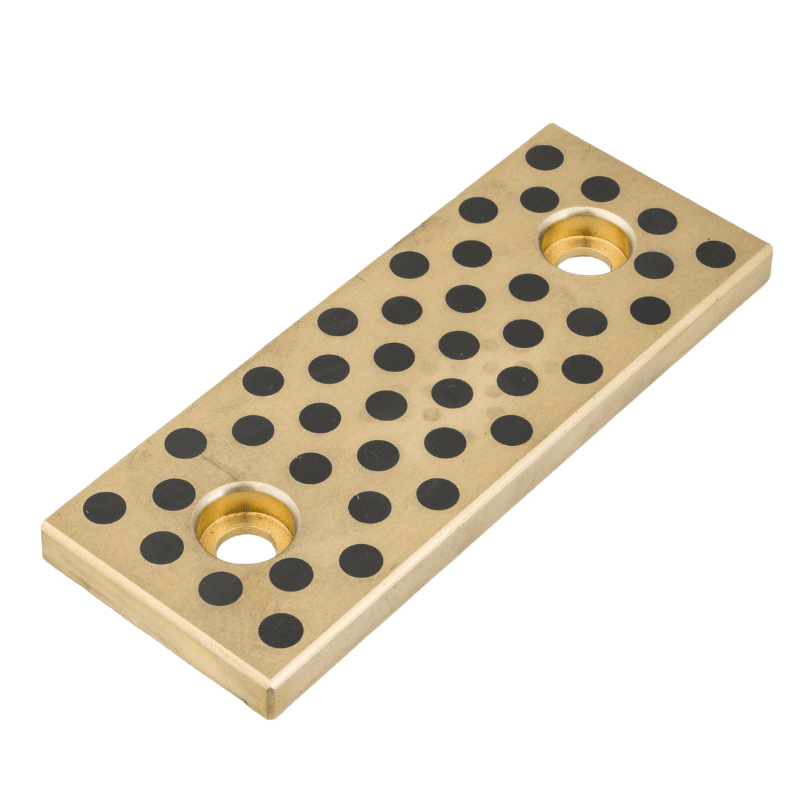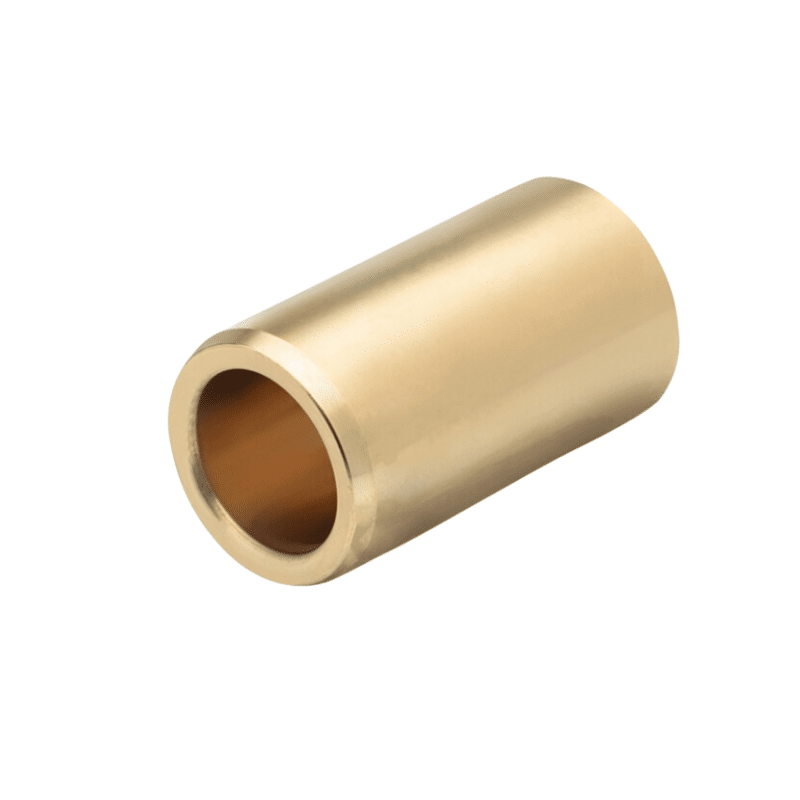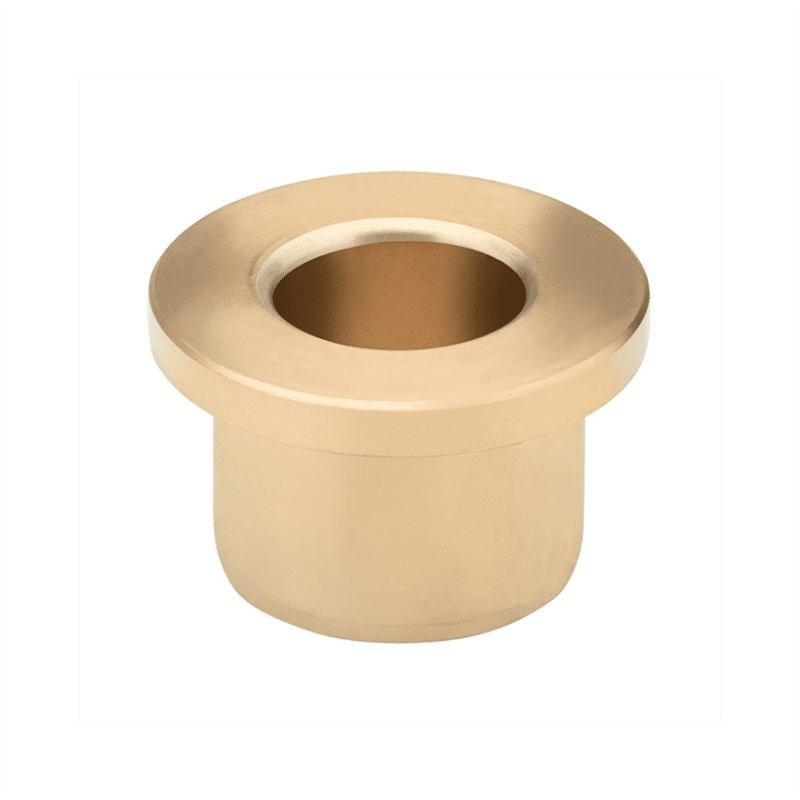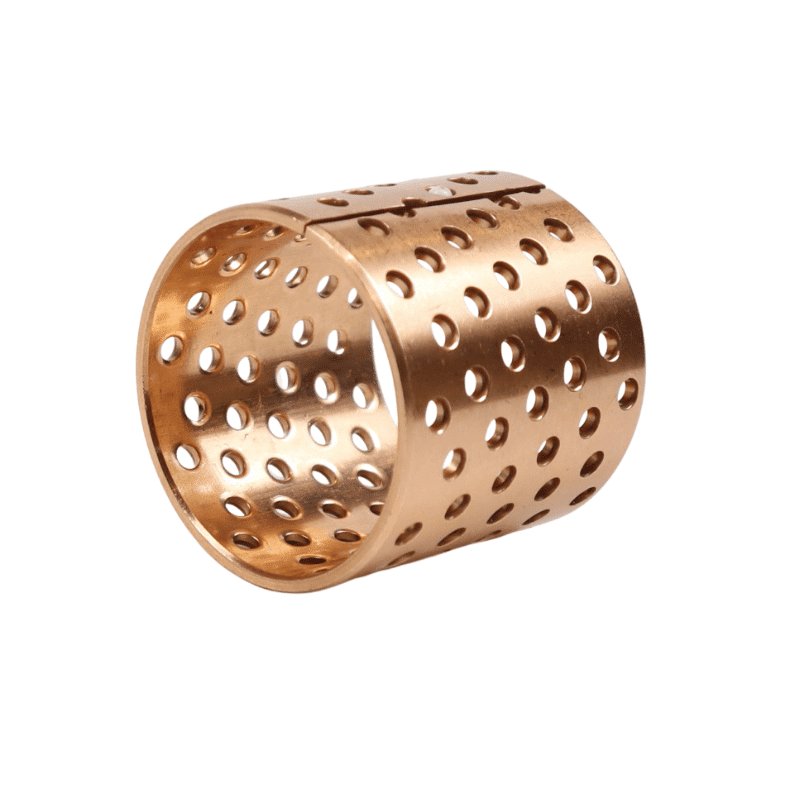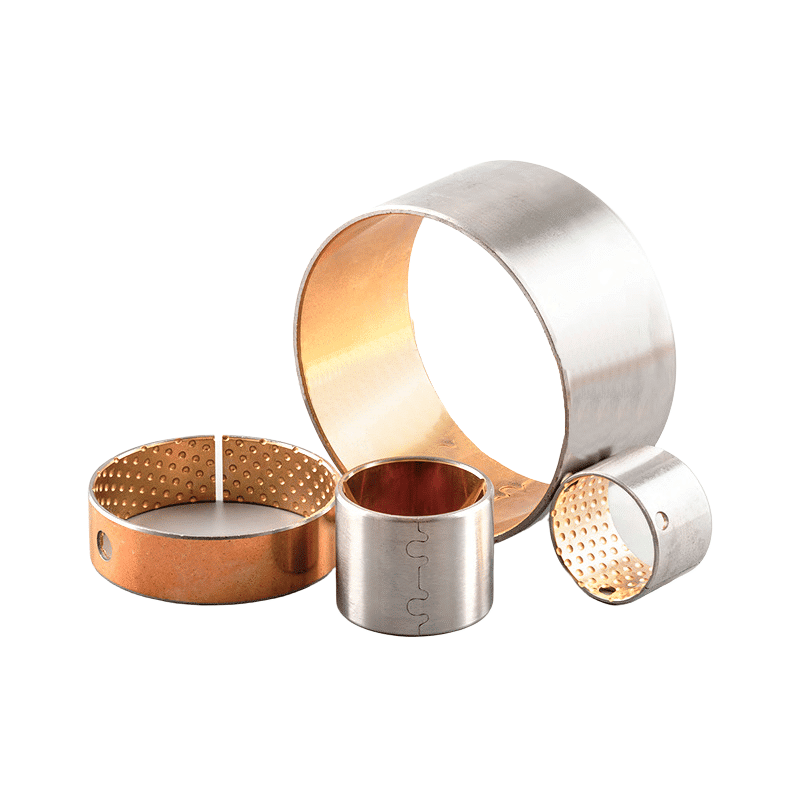Aluminum Bronze Bushings
Aluminum Bronze Bushings
Say goodbye to the hassle of frequent lubrication maintenance. Our self-lubricating technology ensures smooth operation and reduces wear and tear, extending the lifespan of your equipment. Experience uninterrupted productivity and cost savings as you bid farewell to the need for messy lubricants and time-consuming upkeep.
Manufacturing on Demand, alternative solutions
Aluminum Bronze Bushings
Non-Ferrous Metal & Products: An Insight into Aluminum Bronze Bushings
Aluminum bronze bushings are a testament to the versatility and utility of non-ferrous metals in industrial applications. Their combination of strength, corrosion resistance, and wear resistance makes them an ideal choice for challenging environments where reliability and longevity are critical. As industries continue to evolve, the demand for such high-quality, non-ferrous components is likely to increase, further highlighting the importance of these materials in modern engineering and manufacturing sectors.
Advanced Machining of QAI Series Aluminum Bronze Bushings: Spotlight on QAI9-4, QAI9-4-4-2, and QAI10-4-4 Models
Aluminum Bronze Bushings Supplier, C95400 and C95900 Bronze Bushings
As an international producer of bronze bushings, this company operates in markets involved with mining, smelting, and other industrial activities, with its operational base situated in China. Strategically located near the Shanghai port and key transportation networks, the company is well-positioned to ensure the swift and efficient procurement of raw materials as well as the distribution of its finished products. This setup supports the company’s commitment to serving the needs of a dynamic global landscape.
Bronze bearings are commonly used in various industrial applications, including slag casting chains.
Aluminum bronze is utilized in numerous components for its superior qualities as a bearing material, offering an exceptional blend of durability, high tensile strength, and minimal friction when paired with hardened steel moving parts.
This material is notable for its formability, allowing it to adjust or redistribute itself in situations of slight misalignment, such as in a bushing, thereby correcting or ameliorating the misalignment. This reduces friction, galling, and seizing significantly, unlike steel bushings which lack this adaptive property and can permanently misalign, potentially causing damage to the pin during replacement. Thus, aluminum bronze stands out as a preferable material over steel.
Aluminum bronze is part of a group of copper alloys, primarily C954 and C959, consisting roughly of 85% copper, 10% aluminum, and 4% iron. The mechanical properties of these alloys are as follows:
- C95400 Aluminum Bronze Bearings: Tensile strength of approximately 90,000 psi, yield strength of 32,000 psi, and a Brinell Hardness Number (BHN) of 179.
- C95900 Aluminum Bronze Bearings: Tensile strength of around 110,000 psi, yield strength of 60,000 psi, and a BHN of 286.
Aluminum bronze refers to a family of copper alloys (most commonly C954 and C959) with a chemical composition of about 85% copper, 10% aluminum, and 4% iron. Mechanical characteristics are:
C95400
Aluminum Bronze Bearings |
C95900
Aluminum Bronze Bearings |
1018 (ref) | |
|---|---|---|---|
| Tensile strength (typical): | 90,000 psi | 110,000 psi | 64,000 psi |
| Yield strength (typical): | 32,000 psi | 60,000 psi | 54,000 psi |
| BHN Hardness: | 179 | 286 | 126 |
Load Ratings for Aluminum Bronze Bearings
Individual applications differ, but standard handbook PV values for aluminum bronze bushings (either graphited or conventional) are as follows:
Max PV = 40,000
Max P = 4,500 psi
Max V = 225 fpm
Compared to a reference material such as 1018 steel, with a tensile strength of 64,000 psi and yield strength of 54,000 psi, aluminum bronze alloys demonstrate superior mechanical properties, making them an excellent choice for demanding applications.
Benefits of Self-Lubricating Bronze Bearings:
- Durability: Self-Lubricating bronze bearings boast remarkably extended lifespans, often surpassing the operational duration of the machinery or tools they are utilized in.
- Streamlined Design: The elimination of a separate lubrication system simplifies the overall design, reducing the number of parts needed and thus decreasing manufacturing expenses.
- Ease of Maintenance: The absence of regular lubrication requirements not only reduces the potential for maintenance oversights but also lowers ongoing operational and maintenance expenses.
- Environmental Cleanliness: By foregoing liquid lubricants, Self-Lubricating bronze bearings minimize the chance of contamination to both the product and the bearing surfaces, promoting a cleaner operation.
- Economic Efficiency: The adoption of Self-Lubricating bronze bearing components leads to cost savings for manufacturers and end-users alike, by simplifying design, reducing maintenance needs, and enhancing product longevity.
In the world of industrial machinery, the role of bushings is pivotal for ensuring smooth operation and longevity of equipment. The QAI series, particularly the QAI9-4, QAI9-4-4-2, and QAI10-4-4 models, stand out for their exceptional performance, largely attributed to the advanced machining processes applied to aluminum bronze, the material of their construction. This article delves into the specifics of these bushing models and the nuances of machining aluminum bronze.
QAI Series Bushing Models: An Overview
The QAI9-4, QAI9-4-4-2, and QAI10-4-4 are renowned for their durability and efficiency. Each model, designed for specific industrial applications, caters to different load-bearing and wear-resistance needs. For instance, the QAI9-4 model is known for its high load capacity, making it ideal for heavy machinery. Conversely, the QAI9-4-4-2 and QAI10-4-4 models are tailored for applications requiring a balance between strength and flexibility.
Aluminum Bronze: Material of Choice
Aluminum bronze is the cornerstone material for these bushings. Renowned for its strength, corrosion resistance, and ability to withstand high temperatures, aluminum bronze is an alloy typically composed of copper, aluminum, and other elements like iron or nickel. These properties make it an ideal choice for bushings that operate under high stress and in corrosive environments.
Machining Aluminum Bronze Bushings
Machining aluminum-bronze bushings like the QAI series requires precision and expertise. The process typically involves:
- Turning and Milling: The initial shape of the bushing is formed through turning and milling processes. High-speed CNC machines are often employed for their precision and ability to handle the hard nature of aluminum bronze.
- Drilling and Boring: For bushings like the QAI9-4-4-2, which might require intricate internal geometries, drilling and boring are essential. These processes are meticulously controlled to achieve the desired internal diameter and surface finish.
- Heat Treatment: To enhance the mechanical properties of the bushings, a controlled heat treatment process is sometimes employed. This step can significantly improve wear resistance and strength.
- Surface Finishing: Finally, the bushings undergo surface finishing processes, which may include polishing or coating, to reduce friction and further improve wear resistance.
Challenges in Machining
Machining aluminum bronze is not without its challenges. The material’s hardness and abrasiveness can lead to rapid tool wear, requiring the use of specialized cutting tools and frequent replacements. Additionally, achieving precise tolerances can be challenging, necessitating advanced machining techniques and skilled operators.
Aluminum Bronze Bushings Description
Specifications:
| ASTM/CDA | DIN/EN | JIS | GB/QB | SPECIFICATION (Diameter) |
|---|---|---|---|---|
| C61400 | QAI9Mn2 | C6161 | QAI 9-2 | 15.0-60.0mm |
| C62300 | CuAI8Fe3 | C6191 | QAI 9-4 | 15.0-60.0mm |
| C63000 | CuAI10Fe3Mn2 | C6301 | QAI 10-3-1.5 | 15.0-60.0mm |
| CuAI10Ni5Fe4 | QAI 10-4-4 | 15.0-60.0mm |
Characteristics:
- High strength
- Excellent wear resistance
- Superior corrosion resistance in various environments, including atmosphere, fresh water, and sea water
- Capable of hot processing and welding
- Not readily brazed
Applications:
These materials are extensively utilized in various industries such as machinery, shipbuilding, and aviation. They are ideal for manufacturing a range of components, including:
- Bearings
- Shaft sleeves
- Pump parts
- Gears and turbines
- Seats
- Bolts and nuts
- Various structural parts
The versatility of these materials, combined with their robust properties, make them suitable for demanding applications where durability and resistance to wear and corrosion are paramount.
Conclusion
The QAI9-4, QAI9-4-4-2, and QAI10-4-4 aluminum-bronze bushings, owing to their meticulous machining process, stand as exemplary models in industrial machinery. Their production not only highlights the capabilities of aluminum bronze as a material but also showcases the precision and expertise required in modern machining practices. As industries continue to evolve, the demand for such high-quality components is likely to grow, underlining the importance of advanced manufacturing techniques in meeting the challenges of modern engineering.
Your expert in self-lubricating Bearing
and Bronze alloys – serving globally
Brand replacement products and functionally equivalent parts, alternative solutions
Manufactures flange bronze bearings, service & maintenance companies to meet the exacting specifications required in a wide range of industrial applications.
Machined bronze bushing that meet the exacting requirements & specifications supplied by our clients. Spherical bearings, spindles, semi-spheres and supports that we have manufactured.
You will find to follow a selection of self lubricating bronze bearing material CuSn7Zn4Pb7, CuSn12, CuAl10Fe5Ni5,
CuZn25Al5Mn4Fe3
Alternative solution,We offer an outsourced machining service for bronze bushes, manufacturing precise parts to the designs supplied to us by our clients.
Selection of other composite bushing material of self lubricating bearing that we have manufactured.
Wrapped Bronze Sleeve Bearing, Are you interested in our products?
Manufacturer of bimetal and steel bronze bushing parts according to client’s drawing.

